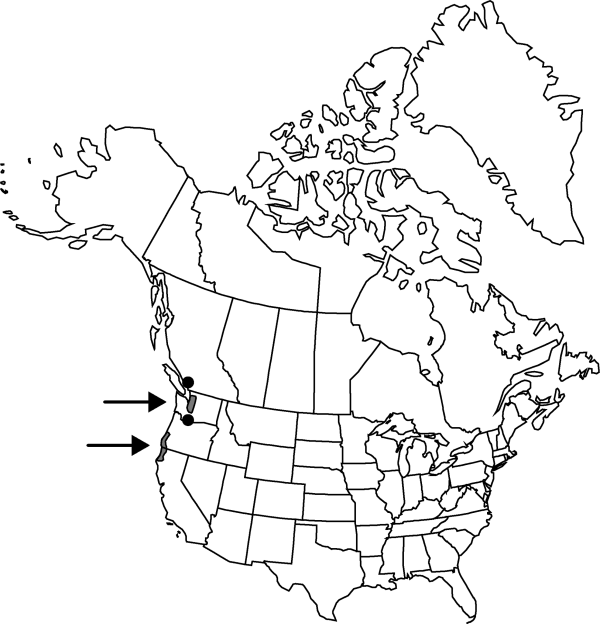Claytonia washingtoniana
Werdenda 1: 10. 1923.
Common names: Lake Washington claytonia
Basionym: Montia washingtoniana Suksdorf
Revision as of 14:19, 27 July 2019 by FNA>Volume Importer
Plants annual, with minute, tuberous body; periderm absent. Stems 3–15 cm. Leaves: basal leaves petiolate, 2–30 cm, blade rhombic or ovate, 2–3 cm; cauline leaves sessile, distinct or slightly connate on 1 side only, blade ovate, 1–3 cm. Inflorescences multibracteate, or with 2–several bracts near base of inflorescence; bracts leaflike, 2–10 mm. Flowers 4–8 mm diam.; sepals 2–3.5 mm; petals pink, 3–4 mm; ovules 3. Seeds 1–2 mm diam., shiny and smooth; elaiosome 1 mm. 2n = 24.
Phenology: Flowering Jan–Jun.
Habitat: Coastal bluffs and disturbed places associated with red alder and moss mats in boulders and cliffs of moist coastal forests
Elevation: 0-500 m
Distribution

B.C., Calif., Oreg., Wash.
Discussion
Claytonia washingtoniana is a fertile hybrid between C. sibirica and C. perfoliata.
of conservation concern
Selected References
Lower Taxa
None.